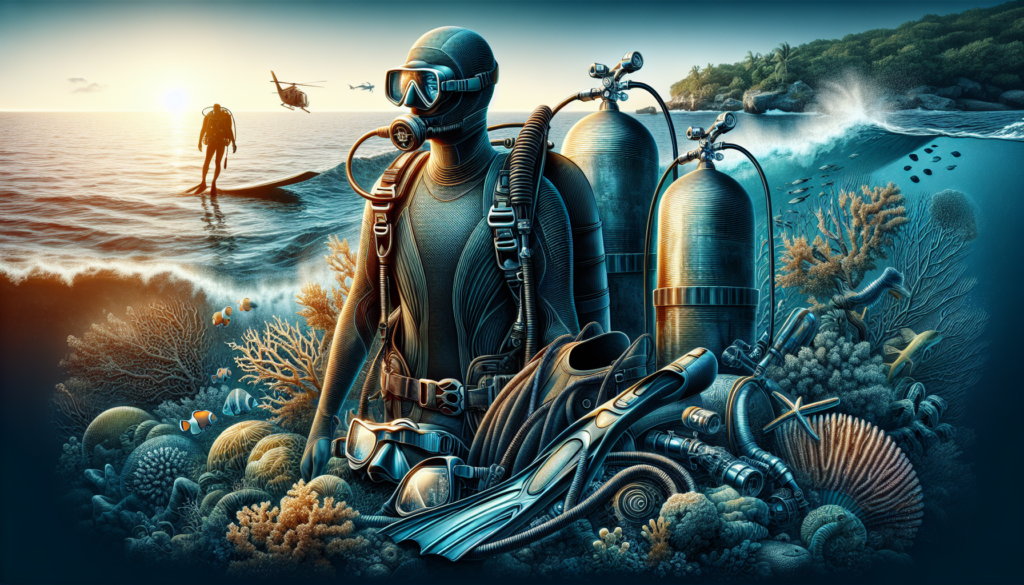Exploring the Depths: A Comprehensive Guide to Scuba Diving Gear
Imagine descending into the azure waters, surrounded by vibrant marine life, exploring the mysterious underwater world. Such is the allure of scuba diving, a thrilling adventure that allows you to experience the beauty and wonder of the ocean firsthand. But before you embark on this underwater journey, you need to be equipped with the right gear. From wetsuits to regulators, dive computers to fins, scuba diving gear plays a crucial role in ensuring your safety, comfort, and enjoyment underwater. In this comprehensive guide, we will delve into the world of scuba diving gear, exploring its various components, functionalities, and importance in the world of diving.
The Evolution of Scuba Diving Gear
Scuba diving gear has come a long way since its inception in the early 20th century. The early days of diving were marked by cumbersome and rudimentary equipment, limited in functionality and efficiency. As technology advanced, so did the gear, paving the way for more streamlined, reliable, and user-friendly equipment. From the invention of the Aqualung by Jacques Cousteau and Emile Gagnan in 1943 to the development of modern-day dive computers and advanced breathing systems, scuba diving gear has undergone a remarkable transformation over the years.
Today, scuba diving gear encompasses a wide range of equipment designed to cater to the diverse needs of divers, from beginners to experienced professionals. Each piece of gear serves a specific purpose, contributing to the overall safety and performance of the diver underwater. Let’s explore some of the essential components of scuba diving gear and their functionalities in more detail.
1. Wetsuits
Wetsuits are a fundamental piece of scuba diving gear, providing thermal protection and buoyancy control for divers. Made from neoprene material, wetsuits trap a thin layer of water between the suit and the diver’s skin, which is then warmed by body heat, helping to regulate the diver’s temperature in cold waters. Wetsuits come in various thicknesses and styles, ranging from full-body suits to shorties, to suit different diving conditions and preferences.

2. Regulators
Regulators are vital components of scuba diving gear, allowing divers to breathe underwater by delivering air from the scuba tank to the diver’s mouthpiece. Consisting of a first stage, second stage, and alternate air source, regulators regulate the pressure of the air delivered to the diver, ensuring a smooth and consistent airflow at varying depths. Modern regulators are designed to be lightweight, durable, and easy to maintain, making them an essential piece of gear for any diver.
3. Dive Computers
Dive computers are sophisticated electronic devices that provide real-time information to divers, such as depth, dive time, decompression limits, and ascent rates. By monitoring these parameters, dive computers help divers prevent decompression sickness, calculate safe dive profiles, and maximize their bottom time underwater. Some dive computers also feature built-in compasses, air integration, and dive planning capabilities, offering a comprehensive tool for safe and efficient diving.
4. Buoyancy Compensators (BCDs)
Buoyancy compensators, commonly known as BCDs, are inflatable vests worn by divers to control their buoyancy underwater. By adding or releasing air from the BCD, divers can achieve neutral buoyancy at any depth, allowing them to maintain their position in the water column effortlessly. BCDs also serve as a storage system for dive weights, providing divers with the necessary weight distribution for proper buoyancy control. Modern BCDs come in a variety of styles, including jacket-style, back-inflation, and hybrid designs, to suit different preferences and diving styles.
5. Masks, Fins, and Snorkels
Other essential components of scuba diving gear include masks, fins, and snorkels, which enhance the diver’s comfort, visibility, and mobility underwater. Masks provide a clear view of the underwater environment, while snorkels allow divers to breathe at the surface without wasting air from their tanks. Fins help divers propel themselves efficiently through the water, reducing fatigue and conserving energy during dives. Together, these pieces of gear form the basic equipment necessary for safe and enjoyable diving experiences.
Expert Opinions
We reached out to expert divers and instructors for their insights on the importance of scuba diving gear. John, a seasoned dive instructor, emphasized the significance of quality gear in ensuring a safe and enjoyable diving experience. “Investing in reliable gear is essential for divers of all levels,” he explained. “From wetsuits to regulators, each piece of equipment plays a crucial role in keeping divers safe and comfortable underwater.”
Common Misconceptions
One common misconception about scuba diving gear is that it is only necessary for experienced divers. In reality, even beginner divers can benefit from using proper gear to enhance their safety and confidence underwater. Another misconception is that all scuba diving gear is expensive and inaccessible. While some equipment may require a significant investment, there are affordable options available for divers on a budget.
Conclusion
To wrap things up, scuba diving gear forms the cornerstone of every diver’s equipment arsenal, providing essential tools for safe, comfortable, and enjoyable underwater exploration. From wetsuits to regulators, dive computers to fins, each piece of gear serves a specific purpose in enhancing the diver’s experience and ensuring their safety in the water. By understanding the functionalities and importance of scuba diving gear, divers can equip themselves with the knowledge and tools necessary to embark on thrilling underwater adventures with confidence and preparedness.



